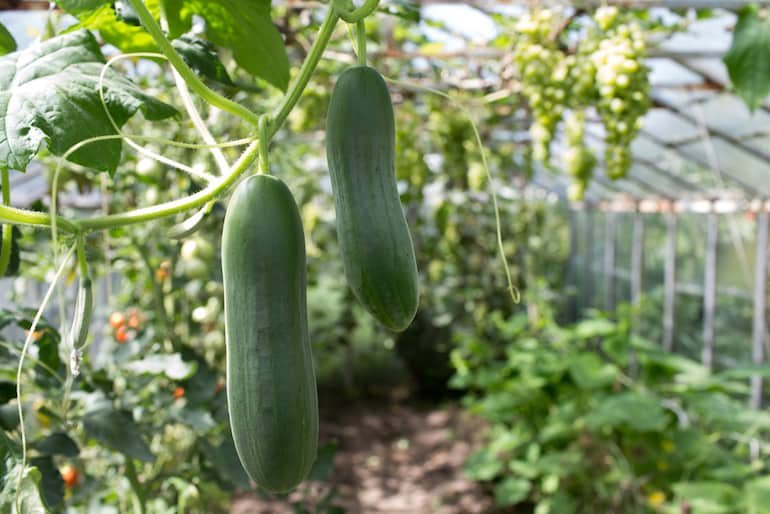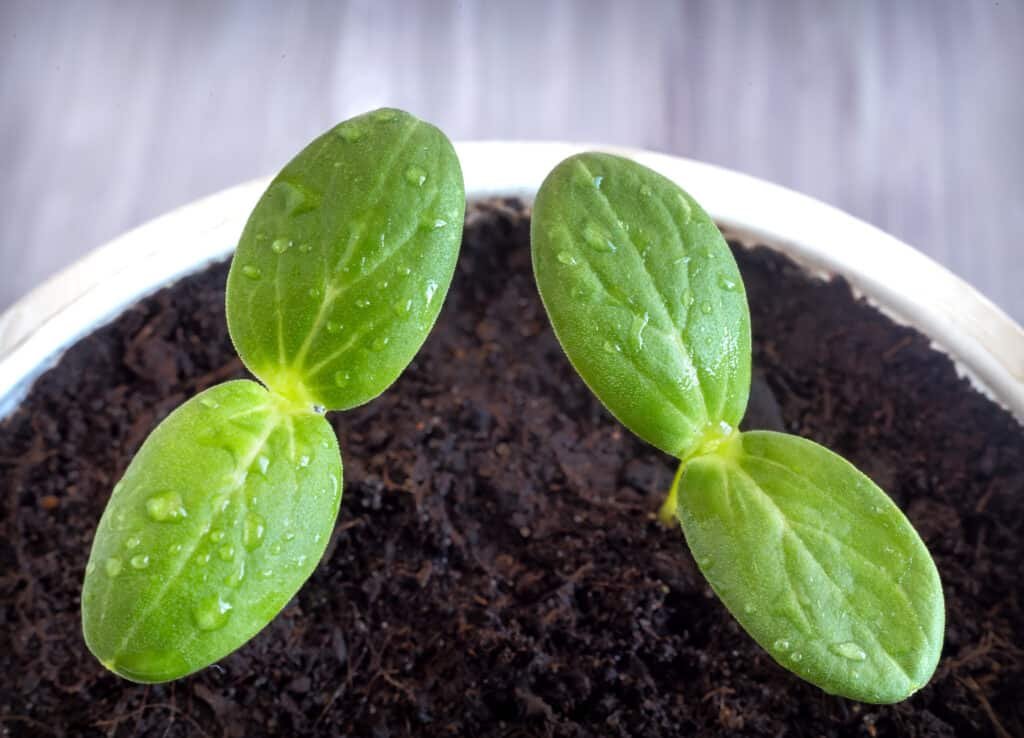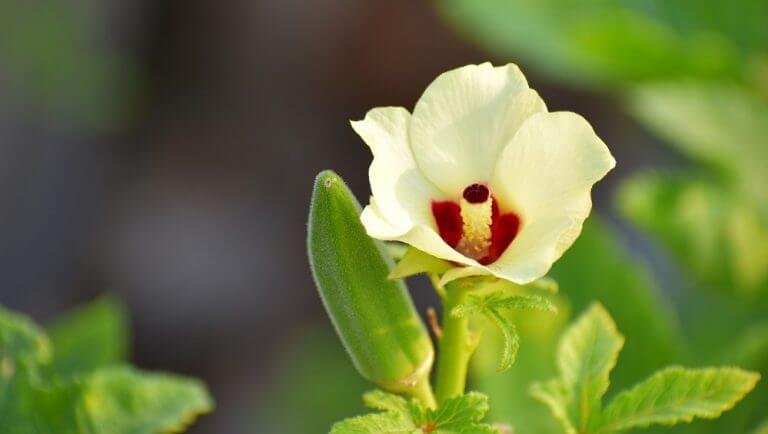Top 11 Common Mistakes in Cucumber Farming You Should Avoid

Cucumber as you already know from my last article about cucumber farming is a very profitable crop to grow. However, there are certain mistakes in cucumber farming that can destroy everything you work so hard for.
Many newbie farmers jump into cucumber farming without proper knowledge of what to do in the business.
In fact, the lack of proper knowledge is one of the major reasons many agribusinesses fail at the startup stage.
However, your own cucumber farming business can be different.
If you already have enough conviction to start cultivating cucumber, then, here are some common mistakes to avoid.
Avoiding these common mistakes will guarantee your success in the business and also increase your profitability.
Avoid these common mistakes in cucumber farming
1. Planting Poor Quality Cucumber Seeds

The use of poor quality cucumber seeds is one of the major mistakes many farmers make in cucumber farming.
The result of this is poor yield and unhealthy plant growth.
So, I encourage cucumber farmers to plant good hybrid cucumber seeds like Darina F1, Murano F1 and Tokyo F1 etc.
Hybrid seeds ensure good disease resistance and great yields.
Farmers should plant cucumber seeds suitable to the climate of their region.
In Nigeria, there are some high yield cucumber seeds that yield over 25 tonnes per acre.
There are still some that can barely yield up to 7 tonnes per acre under the same growing conditions.
In the same way, there are some cucumber varieties that are tolerant to downy mildew and there are some that are not at all.
Cucumber downy mildew is very common in Nigeria, especially during the rainy season.
It is, in fact, one of the main diseases that negatively impact cucumber production in Nigeria.
2. Planting The Seeds Too Early

This cucumber farming mistake is peculiar to farmers in frosty regions of the world.
First, you need to know that cucumber is a heat-loving plant.
As a result, you should never plant the crop too early when there is frost or heavy rain.
It is best to allow at least two weeks to go by after the last frost date because they are very sensitive to frost damage.
According to The Old Farmer’s Almanac, your soil needs to be at least 70 degrees Fahrenheit for germination to take place.
So, it’s best to give your cucumbers a spot where they can enjoy full sun.
If you can’t wait for the frost to be over, you can start the cucumber seeds indoors a few weeks before transplanting them into the ground.
Another tip you could apply is to perch them on top of a water heater so they get that bottom heat of about 70 degrees.
3. Ignoring Soil Management
The second mistake that will cost you dearly in cucumber farming is poor soil management.
Cultivating cucumber in poor soil is a perfect invitation to failure and I believe no farmer wants to fail.
The cucumber plants need nutrient-dense soil that is rich in organic matter, so you have to provide that.
Also, the soil pH range must be between 5.5-6.5 since cucumbers love an alkaline soil.
If your cucumber farm has poor soil, then you must amend it with manure, microbial inoculants, humates (humic acid and fluvic acid) and fertilizers if need be.
Good soil in the cucumber farm ensures a healthy start for the seedlings until harvest time.
In addition, introducing beneficial microbes to soil guarantees problem-free cucumber farming.
These beneficial microbes stop the growth of harmful soil microbes which will otherwise affect your cucumber plants and final yield.
So, to be safe from planting your cucumber in poor soil, I will advise you to carry out a soil test before planting.
The soil test will reveal a lot of nutritional gaps in the soil and give you an insight into how to properly fix those lapses.
4. Improper Irrigation and Water Management

Even though cucumber is a heat-loving plant, it still needs water to grow properly and yield a good harvest.
Therefore, there is a need to irrigate your cucumber farm, especially during dry times.
Although there are several different methods of irrigation, however the best way of irrigating the cucumber farm is by using Drip Irrigation.
Drip irrigation is the best type of irrigation for cucumber farming because it saves water, reduces labour, allows fertigation and very efficient in root zone wetting.
Note that even though you must water the cucumber plant, you must never use poor quality water to do so.
Poor water quality may result in some serious issues for cucumber plants.
In addition, it may also affect their growth and yield.
As a result, you must test the water to know its pH value and mineral content.
If there exist any inadequacies in the water quality, then you must quickly fix that before irrigating the farm.
5. Inadequate Fertilization
Inadequate fertilization is also one of the major mistakes many farmers make in cucumber farming.
In fact, this error begins from the moment the farmer decides not to test the soil first to know what kind of fertilizers to use.
As long as a farmer uses insufficient fertilizers and manure were on his cucumber farm, he will definitely record very low yield.
Generally, cucumber plants need a heavy dose of nutrients to grow and yield properly.
It is in their nature to zap nutrients voraciously from the soil.
So, when these nutrients are not enough, the farmer’s effort will all go to waste as the cucumber will yield poorly.
How to properly apply fertilizer to your cucumber farm
To prevent this, firstly, you must test the soil of your cucumber farm.
Next, use the result from the soil test to amend the soil with loads of manure or fertilizer.
If you are using drip irrigation in your cucumber farm, then apply soluble fertilizers that will dissolve into the soil immediately.
Some examples are Potassium Nitrate, Monoammonium Phosphate, Monopotassium Phosphate, Chelates, Urea, NPK and Calcium Nitrate.
If you are using organic farming methods, then, use manure, nutrient solubilising microbes, humates and organic fertilizers.
I highly recommend using the organic method of fertilization because cucumbers have the tendency of absorbing chemical fertilizers into the pod.
So, to cap it all, make sure your soil amendment is in accordance with the soil test result for the cucumbers to perform well.
6. Poor Pest and Disease Control

Pest and diseases are not a good thing to harbour in your cucumber farm.
They can eventually destroy acreages of cucumber plants within days.
Unfortunately, pests and diseases start attacking your farm long before you even plant the cucumbers.
They are always on the farm in the form of eggs, larvae or full-grown organisms.
If you don’t apply proper strategies to prevent any pest attack or disease outbreak, then you might lose your harvest.
Obviously, prevention is always better than cure when it comes to managing pests and diseases in cucumber farming.
How to properly prevent pests and diseases in cucumber farming
If you are going to use pesticides, then use different pesticides at different intervals.
This is very vital so that the pests do not adapt and become resistant to the effect of the pesticide.
Also, you don’t have to wait until you start seeing pest damages before you take action.
Spray the pesticides before planting and when the crop starts growing to ensure healthy growth.
When the crops have good and healthy growth, they can better withstand disease and pest attack.
Some beneficial microbes like Bacillus spp and Trichoderma spp can help to curb the activities of diseases and pests in the cucumber farm.
Many insects tend too feed on cucumber leaves and cause them to wither.
Because of this, use good insecticides that can resolve insect attacks quickly.
Downy Mildew is a fungal disease cucumber farmers combat every year in Nigeria.
So, it makes sense to prevent it from affecting your cucumbers.
Downy Mildew barely survives in an alkaline environment.
So, you can raise the pH of cucumber leaves by spraying humic acid, potassium silicate or bicarbonate of soda.
Also, spraying kaolin on the cucumber leaves also helps to prevent Downy Mildew.
In addition, any fungicides with copper and mancozeb are also effective for the prevention of diseases in the cucumber farm.
Finally, note that careless use of nitrogen fertiliser may increase downy mildew, fungal infections and insect attack problem.
In the same way, potassium imbalance during cucumber fruiting may also worsen fungal attacks on cucumber leaves.
To be safe, use organic manure and compost on your farm.
I shared a recipe for an organic pesticide in my previous article about cucumber, you can check that too.
7. Lack of Proper Weed Management
Weeds generally compete with economic crops as they grow together.
They can reduce cucumber yield by as much as 70%.
Besides competing for nutrients and water, they may also host harmful pests and diseases.
As a result, they inhibit the healthy growth of your cucumber crops.
Make sure to remove weeds from your cucumber farm as soon as possible.
Even though you can use herbicides to remove weeds from the cucumber farm, it is best to use hoes and cutlasses instead.
8. Not Staking your Cucumber Plants

If you are not staking your cucumber plants to allow the vines to climb, you are invariably inviting soil-borne diseases.
Soil-borne diseases can really damage the plant when you leave it crawling on the ground.
In addition, they also take space and make it difficult for the farmer to move around freely and work on his farm.
It is better for you to stake the cucumber plants using trellises.
Doing this makes it easy for farmers to increase their planting density and also benefit from the ease of movement on the farm.
Additionally, cucumber plants tend to perform better when you stake them.
9. Reckless Usage of Pesticides
If you apply pesticides in your cucumber farm without control, it can negatively impact the growth and yield of the plants.
This is one of the common mistakes in cucumber farming can cost you dearly.
More importantly, make sure you totally avoid the use of pesticides when the plants start flowering
This is because the pesticides will kill the bees which are very vital for the process of pollination.
As a result, your cucumbers will yield poorly.
So, I advise you to limit the use of all those chemicals during flowering.
If the situation is critical (it should not get to this point if you follow all the previous points), then apply pesticides in the evening.
At this time, the bees will not be active, so the chemical will not kill all of them as they will be in their hives.
10. Not Picking Them Correctly and on Time

Okay, it’s time for harvest and you need to start picking your cucumbers.
A common mistake people make in cucumber farming is to just pluck the cucumbers.
Unknown to them, they are damaging the vine and limiting the crop from producing more.
So, instead of just plucking the cucumber from the vine, The Old Farmer’s Almanac suggests the use of a knife or vine clippers.
Also, cucumber is best when its uniformly green, firm and crisp.
As a result, you need to harvest them immediately they are due.
If the cucumbers turn yellow, then it means that you did not harvest them quickly.
Also, It’s important to always pick your cucumbers when they are due because they’ll stop producing otherwise.
Leaving big fruits on the cucumber plants can stress the plants and make the plants stop production of further fruits.
Harvesting regularly is beneficial to cucumber plants as it makes them produce a lot of fruits.
As a recommendation, it is good to harvest cucumbers every two days after maturity for maximum yield.
11. Lack of Good Marketing Strategy
Even though cucumber farming is lucrative in Nigeria, a lot of farmers fail because they lack a good marketing strategy.
However, farmers must do their market analysis before planting.
Otherwise, when it’s time to harvest the cucumbers, the farmer will not know where to sell his product or he will sell at lower rates.
If this occurs, then you will lose a lot of profits which should come to you.
To prevent this from happening, make sure you do proper market research and have a ready market for your cucumbers.
You can sell to supermarkets if you produce healthy and large cucumbers.
Also, you can sell to marketers who sell cucumbers in the open markets.
In addition, you should know that there are peak and off-peak seasons for fresh cucumbers sale in Nigeria.
You can take advantage of this and produce when there is a scarcity of cucumbers.
By this time, you can charge higher for the produce.
Summary of the common mistakes to avoid in cucumber farming:
Avoiding these 10 common mistakes in cucumber farming will see you producing plenty of healthy cucumbers henceforth.
Now, I want to learn from you, which of these mistakes are you going to start correcting in your cucumber farm immediately?
Leave a comment below and share this article using the social media icons on your screen.
Sources:






Is Molasses good for Cucumbers
Yes, sure. Molasses act as a sticker for the spray.
Once the spray dries it isn’t easily washed off by rain or dew.
It is also good for your plants and soil (promotes microbial activity) because of its mineral content (Calcium, Iron, Magnesium).